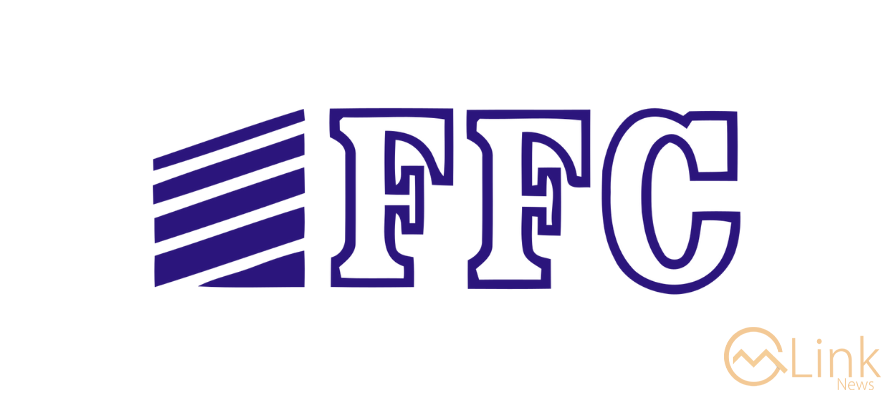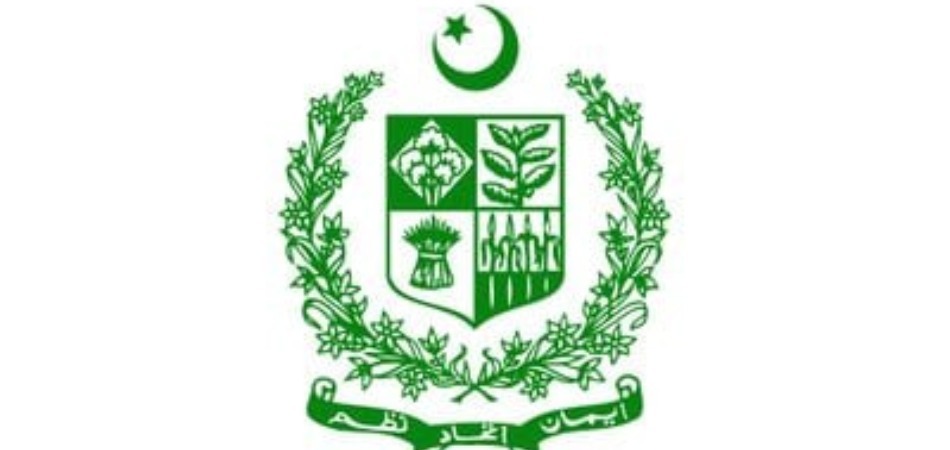NBP to reach nearly Rs150 by December 2026

MG News | June 17, 2025 at 11:12 AM GMT+05:00
June 17, 2025 (MLN): National Bank of Pakistan (PSX: NBP) is poised to reach a
price target of Rs149.7 per share by December 2026, offering an upside of 39%
from the current market price of Rs108 per share, along with a CY25 dividend
yield of 14%.
NBP’s management can now focus on enforcing KPIs and
refreshing internal guidance on key metrics, according to a report by KTrade.
The bank has moved past legacy pension litigation in 2024
after a drawn-out legal process since 2015, building strong capital buffers
(CAR 28.19%) over the period.
This should allow NBP to undertake an overhaul strategy by
recalibrating the deposit mix gradually in line with peers while optimizing the
loan book and increasing efficiency with KPI enforcement across the bank’s
segments.
The bank’s ROE averages over ~13% across our forecast range,
where a significant CAR buffer (~over 1,500bps against D-SIB CAR requirement of
13%) should support a gradual move towards payout levels pre-pension litigation,
giving NBP the highest payout yield in the domestic banking space.
This should allow NBP to align its performance going forward
with its peer group.
KTrade expects the bank to recalibrate the deposit mix going
forward by benchmarking incentives across its 1,500-plus branch network while
rationalizing rates on PSE deposits to market levels.
The house also expects deposit costs to narrow by 1,256bps
over the forecast range, outpacing our coverage sector average.
Additionally, NBP’s core earnings are supported by a captive
inter-government transaction fee base, which supports the outlook for
non-funded income.
The bank’s pension litigation originating through a 1977
conversion of employee retirement plans was finalized in Jun’24 after the
Supreme Court dismissed an appeal petition.
This led to a current portion charge against the bank’s
original pension fund scheme of Rs49bn (Rs12/share - 49% of full year Dec’24
earnings) and Rs8.5bn in recurring charges from 2024 onwards.
Going forward, NBP is expected to face elevated compensation
expenses with an absolute annual impact of Rs8bn-Rs8.5bn, generating an
additional 500bps to the overall cost/income forecast.
NBP suspended payouts since 2017 (a nominal payout of 7.5%
or Rs1 per share was announced in 2021) and only recently resumed payouts at a
conservative 65% in Dec’24.
Prior to suspension, NBP posted a consistent payout of 80%
between 2011-2016.
Net Interest Income CAGR of 21% over the last three years,
with IDR increasing to 119% by Dec’24, has led to a CAR buffer of ~28%+.
ROE is expected to average 13% across the forecast range and
should lead NBP to gradually move towards its historic payout level, giving the
bank the highest dividend yield within banking sector peers.
The bank has outperformed the market by 117% over a trailing
12-month period, driven by the closure of its pension litigation, leading to
the first payout since 2021.
Trading at 0.5x on P/BV, NBP trades at the lower end of our
sector coverage valuation range, and KTrade believes this discount will narrow
going forward as the bank delivers a sustainable ROE trajectory and increases
payouts going forward.
NBP’s management can now focus on KPI enforcement and
refresh internal guidance on key metrics. This should allow NBP to align its performance
going forward with its peer group.
KTrade expects the bank to recalibrate the deposit mix going
forward by benchmarking incentives across its 1,500-plus branch network while
rationalizing rates on PSE deposits to market levels.
The house expects deposit costs to narrow by 1,256bps over the
forecast range, outpacing our coverage sector average.
Additionally, NBP’s core earnings are supported by a captive
intergovernmental transaction fee base, which supports the outlook for
nonfunded income.
KTrade expects NBP to undertake a two-pronged strategy for
recalibrating the deposit base. The bank’s cost of deposits at 17.6% for Dec’24
is significantly higher relative to the comparable peer group.
NBP should look to rationalize PSE deposits by aligning
rates with the broader market.
GoP and PSE deposits make up 48% of the total deposit mix
and should be subject to renegotiation and or shedding.
The management, in our view, is unlikely to continue
allowing bureaucratic intervention and enforce guidance on the cost of deposits
as a key KPI going forward.
Historically, these deposits would carry elevated cost in
the range of 100bps-150bps versus market rates.
Retail Banking Reset: 1,500+ branches give NBP the largest
branch network, second only to HBL.
On a relative basis, deposit per branch growth has exceeded the peer group by 9% over the last 2 years.
The brokerage house expects this to improve further as the
bank begins to incentivize low-cost deposit mobilization through retail banking
in line with peers and disincentivize savings and fixed-term deposits.
The bank’s marketing spend supports a repositioning of its
retail banking, up 52% YoY in Dec’24 and expected to remain near current levels
over the near to medium term.
Management guidance targets CA% improving to 33% by the end
of the year from 26% currently.
KTrade believes this may be optimistic and conservatively expects
an improvement to 28% by year-end end reaching 35% of the deposit mix at the
end of our forecast range.
The house expects NIMs to expand by 80bps in CY25 as interest-bearing
deposits reprice in line with policy rate revisions and average 3.5% over our
forecast range.
They see limited branch network additions going forward;
however, they expect accelerated conversions to Islamic Banking Branches.
NBP has 203 Islamic branches out of a total branch network
of 1,503 branches.
NBP is expected to convert between 40-50 branches this year
and accelerate the pace each year, supporting the bank’s efforts to reduce
deposit costs.
The bank is recalibrating the Loan Book post Dec’24.
Ahead of ADR Taxation, NBP accelerated loan growth by 9.2%
sequentially in 4Q2024 at potentially lower spreads, taking full year loan
growth to 0.5% YoY.
The ADR tax was subsequently removed, and by Mar’25, NBP
contracted the loan book by 8.5%, reducing ADR to 33% for the quarter from 36%
in Dec’24.
Going forward, management guidance targets an ADR of 40% by the end of 2025 which should be in line with the bank’s recent history 2019-2022 however KTrade expect better internal controls across lending practices which should prevent a deterioration in credit quality reducing surprises in the form of higher provision charges and non-performing loans.
NBP has historically maintained a high loan concentration to
the Government and Public Sector Enterprises (PSE), averaging 34.3% over the
last five years, considerably higher than peer group banks, which should
rationalize gradually.
While the brokerage houses are cognizant of limitations with
NBP to reduce exposure to this segment, we do expect better internal controls
and restructuring of PSEs under Structural Benchmarks (SB) and Quantitative
Performance Criteria (QPC) with the IMF to contain NPL formation from this
exposure.
The government is targeting to reduce interventions across
commodity operations, which can decrease concentration across the loan book,
leading NBP to increase exposure to higher-yielding segments.
Going forward, KTrade expects credit growth for the bank to
average at a conservative 7% across our forecast range, with an ADR averaging
between 36%-38%.
A gradual recovery in large-scale manufacturing as the
interest rate setting becomes supportive can provide NBP the opportunity to
push ADR to target levels over the medium term.
The house forecast NBP’s near-term spread to expand by 0.6%
bps to 3.1% and average 3.2% across our forecast range 2026-2029.
Between 2019-2024, NBP trailed sector advances in growth.
NBP recorded a 4% growth versus the sector growth of 14%.
KTrade further expects NBP to continue trailing across
2025-2029, but at a narrower pace with 7% versus 10% for sector loan growth.
The house expects NBP to continue targeting spreads across
investment yields at a lower risk as the bank focuses on improving internal
controls to prevent asset deterioration over the same period.
NBP has historically faced asset quality concerns, with
provisioning charges totaling Rs95.8bn (28% of sector provisions) between
2018–2023.
Coverage ratio declined from 107% (2018) to 92% (2023) due
to exposures in downstream oil & gas and private commodity financing.
A large commodity borrower default in Dec’24 further reduced
coverage to 84% (from 99% in Sep’24), with infection rising from 16.9% to
19.1%.
However, by Mar’25, IFRS-9 Stage 3 adjusted coverage
recovered to 106%, 900bps above sector average.
19% of NPL stock as of end-2024 is public sector-related.
While exposure to this segment remains, IMF-driven reforms
are expected to contain future asset quality risks.
NPL formation is forecast at 21% with coverage in the 92–98%
range.
Public sector reforms, ceilings on guarantees, and
scaled-back commodity operations may improve asset quality.
Stronger internal controls could mitigate risks in volatile
sectors (e.g., textiles, sugar at 11.4% of the loan book).
A 200bps policy rate cut by FY26 may aid restructurings.
Provisioning reversals are not modeled, but upside risk to earnings exists.
NBP’s core earnings are supported by inter-government
transaction fees, with fee income comprising over 50% of normalized NFI.
Debit card fees have grown at a 3-year CAGR of 41%. Capital
gains drove 22% NFI growth over 3 years, with Rs28bn realized in 2024
(PkR6.76/share post-tax).
Unrealized gains total Rs67bn, second only to UBL. The
equity book (Rs43bn at cost) generated Rs5.8bn in dividends in 2024.
NFI is projected to grow at a 4% forward 4-year CAGR.
NBP’s pension litigation, originating from the 1977
retirement plan conversion, concluded in Jun’24 after the Supreme Court
dismissed appeal petitions.
This resulted in a one-time charge of Rs49bn (Rs12/share,
49% of full-year Dec’24 earnings) and recurring annual charges of Rs8.5bn from
2024 onward, raising compensation costs by ~500bps.
In Mar’24, the Supreme Court dismissed all civil petitions
filed by NBP, upholding the Sept’17 decision.
NBP was ordered to pay arrears of government pension
increases only to parties involved in the original case.
New litigation by non-party petitioners followed, though
interim relief has suspended further payments.
NBP has accounted for potential unfavorable outcomes.
A 1997 amendment to the Bank Nationalization Act allowed the
BoD of nationalized banks to revise employee benefits.
NBP’s 1999 revision increased basic pay by 110–140% as the
pension base.
Retired employees filed petitions in 2010–11 seeking
reinstatement of 1977 benefits and government-notified pension increases.
NBP's investment since 2003 stands at Rs49bn as of Mar’25,
offering future value despite low near-term liquidity prospects.
The bank maintained an 80% payout until 2016 and declared a
full-year DPS of Rs8/share (65% payout) in 2024 despite pension charges.
A conservative 50% payout is assumed going forward, placing
NBP ahead of peers in forward yield. Any policy changes require a
Constitutional Amendment to the Banks (Nationalization Act) of 1974.
Risk
A pending Supreme Court case related to a different class of
pensioners claiming increased payments from NBP remains unresolved.
While the Lahore High Court had ruled in favor of the
pensioners, the Supreme Court has provided interim relief to NBP.
The bank has taken a cautious approach by incorporating the
financial impact in its 2024 statements.
Under IMF guidance, the government is pursuing PSE reforms
to limit fiscal slippage through structural changes like independent boards and
IFRS-9-based audits.
Delays in implementation may increase NPL risks.
Recent geopolitical tensions, including the Pakistan–India
conflict and the Israel–Iran situation, have driven commodity prices higher,
potentially worsening Pakistan’s external position and slowing economic
recovery.
Rising commodity prices may also trigger inflation,
prompting a shift in SBP’s policy stance and altering sector dynamics.
Despite a solid coverage ratio, the bank faces asset quality
concerns due to significant exposure to struggling sectors like OMCs and steel.
Finally, while management is working to redefine the bank’s strategy, overcoming entrenched bureaucratic challenges will be crucial for future progress.
Copyright Mettis Link News
Related News
| Name | Price/Vol | %Chg/NChg |
|---|---|---|
| KSE100 | 138,412.25 167.69M | 0.32% 447.43 |
| ALLSHR | 85,702.96 423.92M | 0.15% 131.52 |
| KSE30 | 42,254.84 82.09M | 0.43% 180.24 |
| KMI30 | 194,109.59 84.37M | 0.15% 281.36 |
| KMIALLSHR | 56,713.67 217.03M | 0.03% 16.37 |
| BKTi | 37,831.34 13.04M | 1.62% 603.62 |
| OGTi | 27,440.63 3.93M | -0.09% -23.70 |
| Symbol | Bid/Ask | High/Low |
|---|
| Name | Last | High/Low | Chg/%Chg |
|---|---|---|---|
| BITCOIN FUTURES | 118,585.00 | 119,440.00 118,225.00 | 290.00 0.25% |
| BRENT CRUDE | 72.91 | 73.17 71.75 | 0.40 0.55% |
| RICHARDS BAY COAL MONTHLY | 96.50 | 0.00 0.00 | 2.20 2.33% |
| ROTTERDAM COAL MONTHLY | 104.50 | 104.50 104.50 | -0.30 -0.29% |
| USD RBD PALM OLEIN | 998.50 | 998.50 998.50 | 0.00 0.00% |
| CRUDE OIL - WTI | 69.52 | 69.79 68.45 | 0.31 0.45% |
| SUGAR #11 WORLD | 16.41 | 16.58 16.40 | -0.18 -1.09% |
Chart of the Day
Latest News
Top 5 things to watch in this week
Pakistan Stock Movers
| Name | Last | Chg/%Chg |
|---|
| Name | Last | Chg/%Chg |
|---|



